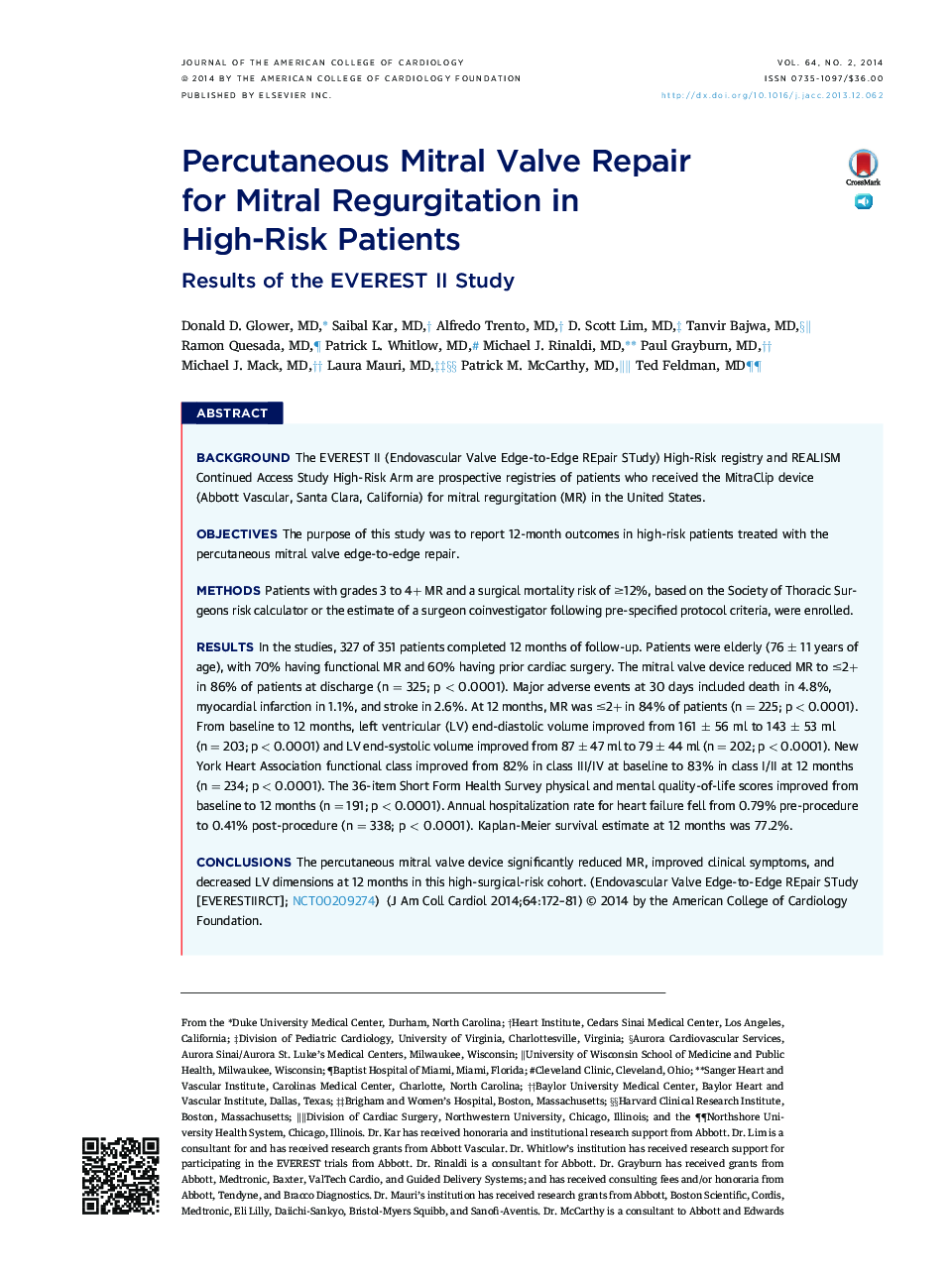| کد مقاله | کد نشریه | سال انتشار | مقاله انگلیسی | نسخه تمام متن |
|---|---|---|---|---|
| 2944861 | 1577094 | 2014 | 10 صفحه PDF | دانلود رایگان |

BackgroundThe EVEREST II (Endovascular Valve Edge-to-Edge REpair STudy) High-Risk registry and REALISM Continued Access Study High-Risk Arm are prospective registries of patients who received the MitraClip device (Abbott Vascular, Santa Clara, California) for mitral regurgitation (MR) in the United States.ObjectivesThe purpose of this study was to report 12-month outcomes in high-risk patients treated with the percutaneous mitral valve edge-to-edge repair.MethodsPatients with grades 3 to 4+ MR and a surgical mortality risk of ≥12%, based on the Society of Thoracic Surgeons risk calculator or the estimate of a surgeon coinvestigator following pre-specified protocol criteria, were enrolled.ResultsIn the studies, 327 of 351 patients completed 12 months of follow-up. Patients were elderly (76 ± 11 years of age), with 70% having functional MR and 60% having prior cardiac surgery. The mitral valve device reduced MR to ≤2+ in 86% of patients at discharge (n = 325; p < 0.0001). Major adverse events at 30 days included death in 4.8%, myocardial infarction in 1.1%, and stroke in 2.6%. At 12 months, MR was ≤2+ in 84% of patients (n = 225; p < 0.0001). From baseline to 12 months, left ventricular (LV) end-diastolic volume improved from 161 ± 56 ml to 143 ± 53 ml (n = 203; p < 0.0001) and LV end-systolic volume improved from 87 ± 47 ml to 79 ± 44 ml (n = 202; p < 0.0001). New York Heart Association functional class improved from 82% in class III/IV at baseline to 83% in class I/II at 12 months (n = 234; p < 0.0001). The 36-item Short Form Health Survey physical and mental quality-of-life scores improved from baseline to 12 months (n = 191; p < 0.0001). Annual hospitalization rate for heart failure fell from 0.79% pre-procedure to 0.41% post-procedure (n = 338; p < 0.0001). Kaplan-Meier survival estimate at 12 months was 77.2%.ConclusionsThe percutaneous mitral valve device significantly reduced MR, improved clinical symptoms, and decreased LV dimensions at 12 months in this high-surgical-risk cohort. (Endovascular Valve Edge-to-Edge REpair STudy [EVERESTIIRCT]; NCT00209274)
Journal: Journal of the American College of Cardiology - Volume 64, Issue 2, 15 July 2014, Pages 172–181